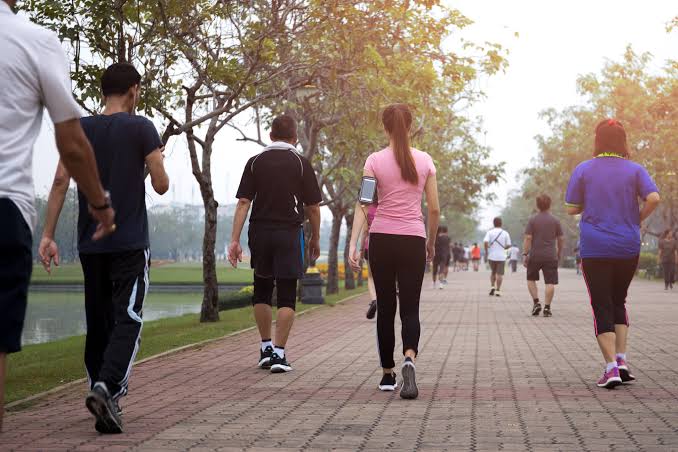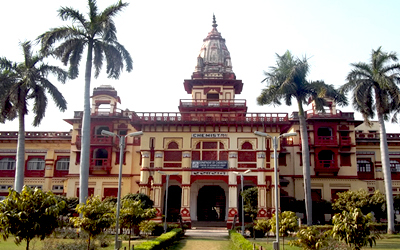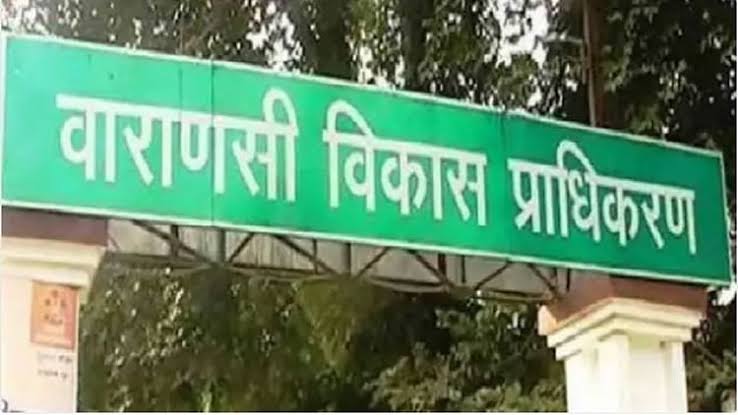Walking Your Way to Health - Varanasi 2km Walking Track
Walking has become a rare commodity in the fast-paced world we live in today. The practice of walking has gradually diminished from our daily life due to the introduction of modern transportation, the ease of personal vehicles, and the growing traffic on metropolitan roadways. But now, the Varanasi Development Authority (VDA) is aiming to build 2-kilometer walking trails in strategic parts of the city, which is a laudable move towards resurrecting this healthful habit. This program seeks to promote a healthier lifestyle in a city renowned for its spirituality and rich cultural legacy in addition to encouraging people to walk more.

Walking's Significance in the Modern World
One of the easiest and most efficient ways to exercise is to walk. It offers numerous health advantages, doesn't require any specialized equipment, and can be done practically anyplace. Frequent walking promotes bone and muscular strength, cardiovascular fitness, mental health, and the maintenance of a healthy weight. Walking is also known to lower the risk of developing chronic illnesses including diabetes, heart disease, and some types of cancer. Despite all of these advantages, walking has become less common, particularly in cities where cars predominate on the roads.
Getting a secure place to walk might be difficult in a city like Varanasi where cars are frequently jammed into the small streets and busy markets. Walking as a form of exercise and transportation has declined in part due to a lack of pedestrian-friendly infrastructure. The VDA has chosen to address this problem by creating walking trails in several locations throughout the city.
The Mission of VDA: Bringing Back the Walking Culture The Varanasi Development Authority, headed by Vice Chairman Pulkit Garg, has designated multiple locations within the city for the construction of walking tracks. These paths are intended to give locals a nice and safe place to stroll without having to worry about traffic hazards. The program is a component of a larger initiative to address the rising concerns about obesity, diabetes, and other lifestyle-related disorders as well as to encourage a better living among city dwellers.
Initially, the walking paths will be constructed in places with high pedestrian traffic. This calculated method makes sure that a lot of people will listen to the tunes right away, which increases their effect. In the project's initial phase, tracks will be built in four strategic locations:
1. Central Jail Road: This neighborhood is quickly growing, and it has been determined that Central Jail Road would be a great place to build a walking track. This neighborhood is positioned to develop into a significant residential center due to the existence of multiple large housing societies and the impending construction of more. This walking track will encourage a culture of walking in the community by giving them an accessible and safe place to exercise.
2. Ramna Road: A walking trail will also be developed in the historically significant Ramna area. The track will travel from the Ramnagar Fort to the Chauk neighborhood, providing a picturesque route that crosses some of the most well-known sites in the city. It is anticipated that this track will draw both locals and visitors, offering them a special opportunity to learn about the rich history of the city while remaining active.
3. Assi Ghat to Ravidas Park: A popular destination for both locals and tourists, Assi Ghat to Ravidas Park is a popular stretch in Varanasi. In addition to encouraging more walking, the new walking track along this route will improve visitors' experiences when visiting these historically important locations. The track will be crafted so that it melds harmoniously with the surrounding natural and cultural setting, enhancing its natural beauty.
4. Pandeypur : To serve the requirements of students, professors, and the local community, a walking track will be built in the Pandeypur region, where a new medical college is being proposed. The walking track will be an essential tool for encouraging community physical activity as the neighborhood grows and the medical college opens for business.

Walking Tracks' Health Benefits
The construction of walking tracks aims to promote a culture of health and wellness in addition to providing infrastructure. The VDA is encouraging people to include physical activity in their everyday routines by designating specific areas for walking. Public health can then significantly improve as a result of this.
1. Physical Well-Being: For individuals of all ages and fitness levels, walking is an accessible low-impact form of physical activity. It lowers the risk of chronic diseases, strengthens bones and muscles, and enhances cardiovascular health. Walking on a regular basis can also help with blood pressure reduction, cholesterol improvement, and weight management.
2. Mental Health: Research indicates that walking improves mental health. It works by releasing endorphins, which are the body's natural mood boosters, to help lower stress, anxiety, and despair. Walking in a park or along a picturesque route is another way that walking in the outdoors can improve creativity and cognitive function.
3. Social Exchange: Walking trails can act as gathering places for people, creating a feeling of community. These paths provide the chance for social connection, which is crucial for mental and emotional health, whether one is strolling with family in the evening or taking a morning walk with neighbors.
4. Environmental Benefits: Encouraging people to walk instead of using vehicles can have a positive impact on the environment. Walking reduces carbon emissions, decreases traffic congestion, and lowers noise pollution. The walking tracks themselves, if designed with greenery and trees, can enhance the urban environment by providing shade, improving air quality, and creating a more pleasant atmosphere.
The VDA's Holistic Approach to Urban Development
The VDA's initiative to build walking tracks is part of a larger vision for the sustainable development of Varanasi. The city, known for its spiritual significance and historical heritage, is undergoing rapid urbanization. While this development brings economic opportunities, it also presents challenges related to infrastructure, traffic management, and environmental sustainability.
By giving pedestrian-friendly infrastructure a priority, the VDA is taking these issues head-on. The walking trails are intended to promote overall well-being in addition to ease of use. For example, the tracks will be bordered with medicinal plants, which are well-known for their healing and air-purifying qualities. By contributing to the creation of a healthier atmosphere for walkers, these plants will enhance the advantages of using the trails. In order to guarantee that the walking trails are often utilized and properly maintained, the VDA also intends to interact with the local population. This include planning community gatherings, exercise regimens, and awareness-raising initiatives around the tracks. The goal of the VDA's activities is to integrate walking into everyday Varanasi life by involving the locals.
Difficulties and Opportunities for the Future
The VDA's plan is not without difficulties, despite its ambition and good intentions. In a city as densely populated as Varanasi, space availability is one of the main challenges. Careful planning and perhaps even the relocation of existing structures will be needed to find enough space in strategic locations to construct 2-kilometer walking routes. Furthermore, these tracks' upkeep will be essential to their success. Inadequate maintenance could cause the rails to deteriorate and deter users from using them.

In order to tackle these issues, the VDA is investigating multiple approaches. For example, by extending walkways or designating specific zones for pedestrian traffic, walking tracks could be incorporated into existing highways in places where space is at a premium. The tracks' durability may also be increased by the use of cutting-edge materials that require little upkeep. Additionally, collaborations with nearby companies and community organizations may be able to supply the funding required for upkeep of the tracks and planning events that will keep them lively and busy.
In the future, other cities dealing with comparable issues might use the VDA's walking track program as a model. The demand for sustainable, health-promoting infrastructure will only increase as urbanization continues to change India's cityscapes. Prioritizing pedestrian areas and promoting a walking culture can help towns like Varanasi maintain their distinct character and legacy while simultaneously enhancing the quality of life for their citizens.
Final Thoughts
The Varanasi Development Authority's effort to construct 2-kilometer walking trails in strategic metropolitan locations tackles all facets of modern urban living. The VDA fosters social contact, mental health, physical health, and environmental sustainability by offering convenient and safe areas for walking. This project aims to promote a culture of health and wellness in one of the most famous towns in India, not only create infrastructure.












